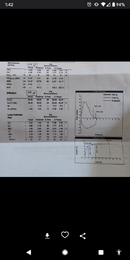ScubaRob0311
Registered
Have a friend who is now interested in getting certified as well. They were asking me how to answer medical question on form and if it was worth pursuing diving?
Basically they went to drs a year or two ago for some shortness of breath that is gone. They did some breathing tests, first time it showed restrictive pattern so they did it again with additional tests that didn't really show restrictive pattern anymore but definitely showed some abnormal results including reduced TLC. I guess other then those abnormal results pulmonologist didn't find anything wrong and said it was possibly from (I forget word they told him) him not being active.
My advice to him is to obviously go back and talk to pulmonologist but he doesn't have health insurance at moment and if it's an obvious no go he doesn't want to waste money making appointment.
Anyone have experience with this?
Basically they went to drs a year or two ago for some shortness of breath that is gone. They did some breathing tests, first time it showed restrictive pattern so they did it again with additional tests that didn't really show restrictive pattern anymore but definitely showed some abnormal results including reduced TLC. I guess other then those abnormal results pulmonologist didn't find anything wrong and said it was possibly from (I forget word they told him) him not being active.
My advice to him is to obviously go back and talk to pulmonologist but he doesn't have health insurance at moment and if it's an obvious no go he doesn't want to waste money making appointment.
Anyone have experience with this?





